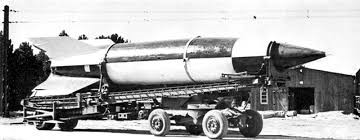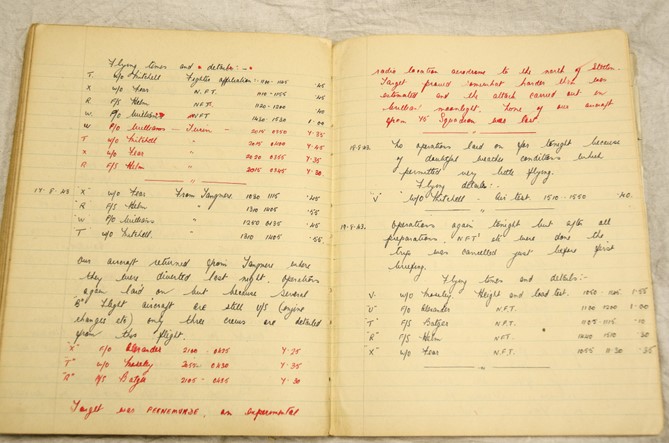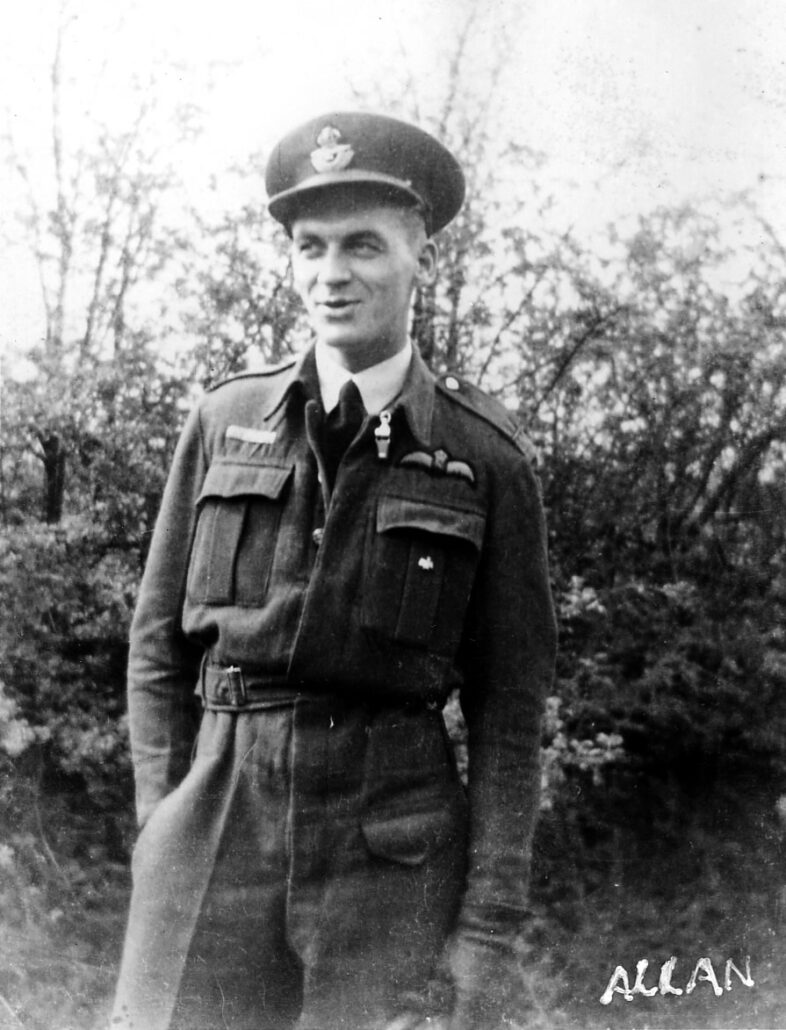Operations
Operations
Operation Hydra – The Peenemunde Raid 1943

A V2 rocket on the launch pad
(Credit: IWM)
Operation Hydra – The Peenemunde Raid 1943
Operation Hydra was an attack by RAF Bomber Command on the German scientific research centre at Peenemünde on the Baltic coast of Germany on the night of 17/18 August 1943. Intelligence reports had identified that the German rocket weapon programme was centred in Peenemunde, in particular development of the prototype V-2 rockets.
The source of Intelligence about the existence and location of the programme is not certain. The official history of MI6 by Prof Keith Jeffery cites several sources including a tip-off from forced labourers drafted to work at Peenemünde. Other reports suggest it was obtained from secretly recorded conversations of a German officer POW, Wilhelm Ritter von Thoma. Whatever the source, MI6 was confident of a rocket development programme at Peenemünde.
Operation Hydra, took place on the night of 17/18 August 1943, involving 596 heavy bombers including 75 (NZ) Squadron. It was intended to target personnel involved in R&D, by bombing workers’ quarters with the secondary objective to render the research facility useless and “destroy as much of the V-weapons, related work, and documentation as possible.
As a target, Peenemünde was spread over a relatively wide area, some 9.5 square miles, and was protected by smoke screens. For accuracy, the raid was to take place during a full moon and the bombers would have to fly at 7-9,000 ft instead of the normal altitude of 18-19,000 ft.
Aircraft from 5 Group had practised a time and distance method for the raid; a distinctive point on the surface was used as a datum for the release of the bombs at a set time – and therefore distance – from it.
Order 176 emphasised the importance of the raid: “If the attack fails…it will be repeated the next night and on ensuing nights regardless, within practicable limits, of casualties.
Three waves of bombers struck. Some markers were dropped too far south, and ultimately several buildings remained undamaged, while many bombs hit the forced labour camps, killing between 500 and 600 prisoners. However, sufficient damage was caused to delay the V-weapons programme for some months, and the senior engineer Dr Walter Thiel was among the dead. Prototype V-2 rocket launches were delayed, with testing and production forced to be dispersed and the morale of the research team severely affected.
To put that into perspective, once the V-1 flying bombs began to be launched against Britain from 13th June 1944, with the V-2 rockets following from 8th September that year, they were fired at an average rate of about 300 V-1s and 230 V-2s per month. The missiles typically caused some 1,400 deaths per month in England, with many more injuries. By setting the German weapon programme back by two months many lives were saved.
Bomber Command lost 215 aircrew and 40 bombers on the operation. Most of the losses were in the third wave. A diversionary attack on Berlin by Mosquitos, imitating pathfinders had at first diverted German air defences. After the Luftwaffe realised that the attack on Berlin was a diversion, about 30 Focke-Wulf Fw 190 Wilde Sau (wild boar) night fighters flew to the Baltic coast and shot down 29 of the 40 bombers lost.

A V-2 rocket, guided ballistic missile, being launched from the Peenemunde rocket research and development centre in 1943 (Image: Royal Air Force)
A New Zealanders recollection of the Peenemunde Raid
Among the crews were that of P/O Allan Alexander, 75 (NZ) Sq. The following is an extract from “Alexander’s Ragtime Crew,” the personal memoir of Alexander:
PEENEMUNDE
17th – 18th August 1943
After eight days of just local flying and fighter affiliation, we were back in the Briefing room. Once again with full tanks so we knew we had a long trip ahead of us. We were quite surprised at the briefing as we were going to a small peninsula in the Baltic Sea, Peenemunde.
The Intelligence Officer gave us a history of the place and why we were going to bomb it with 900 four engine bombers. This was the place where Germany was manufacturing the V1 Flying Bomb, which had been bombing London and other parts of England. We were told that we must take special care as if this target was not wrecked, we were to keep going back until the job was carried out.
We saw little flak or searchlights, until getting close to the Danish east coast when suddenly we were caught right in the middle of a large number of searchlights.
We were flying at 9,000 feet, which is fairly low for normal operations and not a great deal of room for evasive action and the flak can be very accurate around this height. Strangely Ack Ack did not open fire, so we naturally assumed they had us pinned for fighters.
Being low in searchlights, which are tremendously bright, you cannot see fighters approaching. I tried all possible means of evasive action to get out of the lights. We were not attacked so I imagine the evasive action was what kept the fighters at bay. I went back to the old trick I had found which proved to be very effective. This was to do a violent corkscrew and when I came back to the top of the corkscrew and the searchlights were coming up, I throttled back and stalled the aircraft and with the weight of 36 tons and no power, the aircraft just dropped straight down. I then opened the throttles and with the nose down, let the speed build up, then pulled back on the stick and climbed rapidly.
This manoeuvre seemed to fool them, and they were still looking for us a couple of thousand feet below, when we leveled out. I carried on weaving, and they did not catch us again and we were soon over the Baltic heading for Peenemunde where we were all listening out as we approached the target.
The Master of Ceremonies told us what colour of bomb we were to use, but when we arrived there were no markers as yet. We circled out over the Baltic and finally the markers were dropped, and we were all set to go into bomb, when the Master of Ceremonies told all aircraft not to bomb as the markers were over the water and not over peninsula. We had hundreds of aircraft circling around over the Baltic but as it was a clear night it was amusing to see these heavy bombers just waiting to drop their loads.
The second lot of markers were soon down, and we were cleared to carry on down and bomb. We had dropped height to about 5,000 feet to go in for our bombing run and although we were told that there would not be much flak, it appeared to us to be the opposite. As we got over land and I was feeling the effects of the bombs below us, much to Phil’s disgust who was continually telling me to keep straight, but this was easier said than done when you have these huge bombs exploding below. Anyway, we managed to get away and get our photograph and we were smartly away from the area.
While the bombs were going down you could almost see the place disintegrating. It reminded me of the old cowboy films when they would blow up a building and you would see the whole thing go into the air before falling apart.
We left the target on this lovely moonlight night, and we had a couple of Lancasters and Halifaxes more or less in formation with us and this gave us better protection if there were any fighters around.
It was not long after this when there was a huge flash out to port and as I looked, I could see an aircraft in a “ball of fire” starting to go down with one wing detached and seemed to be hanging in the air above the aircraft. This was not one of our Squadron – all returned safely.
We had a quiet trip back over Denmark after that, returning home for a good sleep after a 7-hour 25 minutes trip.
The Alexander crew were:
F/O Allan Mason Forbes Alexander, RNZAF NZ41712 – Pilot.
F/S Maurice Desmond Andersen, RNZAF NZ415675 – Navigator.
F/S Philip Hutcheson Pullyn, RNZAF NZ416643 – Air Bomber.
F/S Thomas James Mayhew, RNZAF NZ415549 – Wireless Operator.
Sgt. Frank Howard, RAFVR 643578 – Flight Engineer.
F/S Armstrong ‘Doc’ Lyon, RCAF R.108340 – Mid Upper Gunner.
Sgt. William Hamish ‘Mac’ MacDonald, RNZAF NZ417219 – Rear Gunner

5 (NZ) B Flight diary for the night of 17-18 August 1943, the Peenmunde sorties, including the Alexander crew, in red. It reads: Target was Peenemunde, an experimental radio location aerodrome to the north of Stettin. Target proved somewhat harder than was estimated and the attack carried out in brilliant moonlight, None of our aircraft from 75 Squadron was lost. (Editor’s note Stettin is now Szczecin, Poland).
